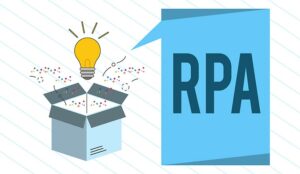Richard Mill of Business Systems looks at how contact centre managers can deploy robotic process automation (RPA) to enhance processes and customer engagement.
Robotic process automation (RPA) has become a major trend in call centre technology, offering significant cost savings through accuracy, greater compliance and speed of delivery without the need for extra agents.
Gartner defines RPA, which is sometimes called smart automation or intelligent automation, as “advanced technologies that can be programmed to perform a series of tasks that previously required human intervention”.
Such is the buzz around RPA, Gartner has just released its first Magic Quadrant for RPA software, highlighting it as the fastest-growing software sub-segment it tracks.
According to GrandView Research, the RPA market will be worth a staggering $3.97 billion by 2025.
RPA has the power to increase the quality of service provided to end-users, whilst erasing the potential for inconsistencies that arise from human errors.
Also, the technology provides users with actionable insight and enables call centres to address tighter regulations and compliance requirements that can dent efficiencies.
By automating more mundane tasks, agents can instead concentrate on tasks that provide greater business value.
The beauty of RPA is it offers an intuitive approach to data flow. Customer profiles can easily be loaded from multiple systems, for example, automating steps such as field entries.
RPA can boost productivity, strengthen compliance, streamline processes and improve agent morale if deployed successfully.
There is no “one size fits all” when it comes to RPA, but here are five steps that will set you up for a smooth journey when considering this technology.
1. Outline your objectives – as with any business roadmap, it is essential you have a clear and detailed plan for your RPA deployment.
Ask yourself what your key objectives are and what technological and cultural changes will be necessary to make adopting RPA a success.
2. Define your business cases – once you have a clear vision of what you want to accomplish, work out which processes are the strongest contenders for exploiting RPA, such as processes that are used very frequently or that are highly repetitive.
3. Choose your RPA tool – this should be grounded on an extensive appraisal of the benefits it can provide to your business. You will want to look at the vendor’s track record deploying RPA, the type of support being offered and their ability to future-proof automation tools.
4. Manage your RPA – you need to look at the feasibility of doing this in-house and whether you have the skill set to do it properly or you need to turn to an external partner.
A partner can provide consultancy, deployment and ongoing management that ensures your tools are optimized to provide performance-driven engagements and follow-the-sun support, for example.
5. Get RPA right before adding the bells and whistles – consultants Deloitte recommend getting robotic automation right first before looking at adding in cognitive and AI-based technologies.
While automation actions do not require that much change within the organization, AI brings with it bigger demands.
By starting with the basis of RPA, call centres can gain confidence in the use of the tools, before making the big step to AI.
Harnessing the Business Benefits
RPA isn’t a simple technology tick box when it comes to call centre technology. RPA requires ongoing training and assessment, for example, if call centres are to get the business value and competitive advantage they expect from their investment. Considering RPA as a short-term project will hold back much of its potential.
What’s more, a successful RPA journey is based on a strong coordination between IT and the business. If RPA deployment is aligned with a company’s strategic direction, the business will see quick and substantial returns on investment.
Take the example of Telefonica 02, which reported an ROI of 650-800% within three years of applying RPA to transactional processes.

Richard Mill
Contact centre managers should be beginning their RPA journey, if they aren’t already on it.
Many call centres are still struggling with repetitive and tedious tasks that automation could have a huge impact on – freeing up agents to focus on projects that have real business value. This inevitably improves the whole call centre experience for both the agent and the customer.
Author: Robyn Coppell
Published On: 2nd Sep 2019 - Last modified: 4th Sep 2019
Read more about - Guest Blogs, Business Systems















